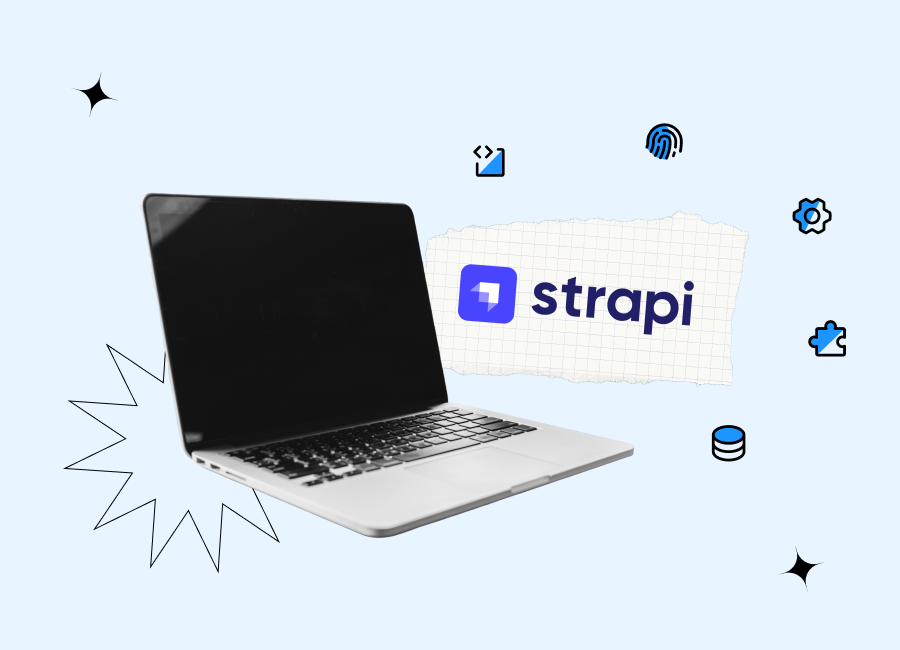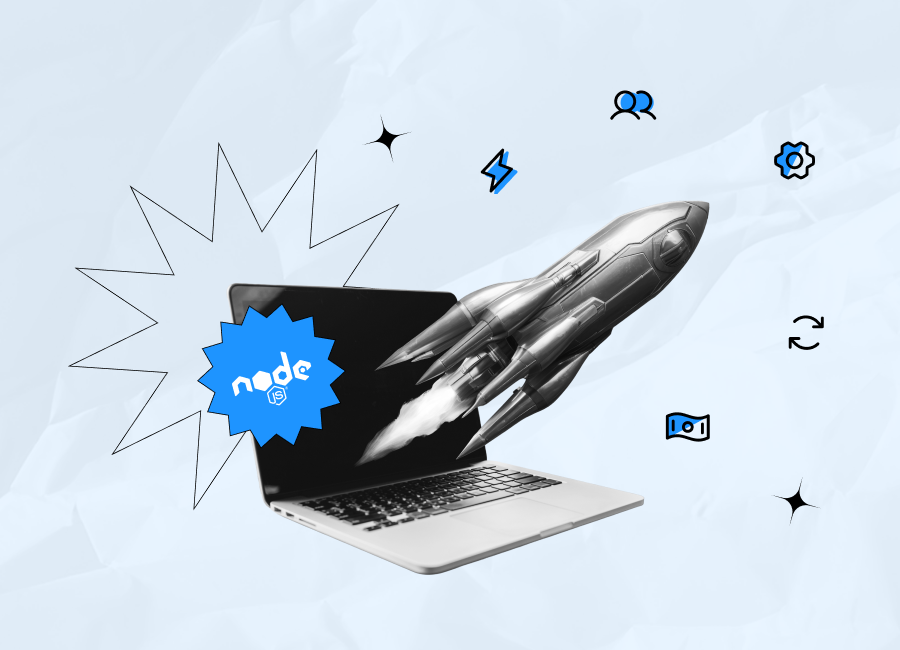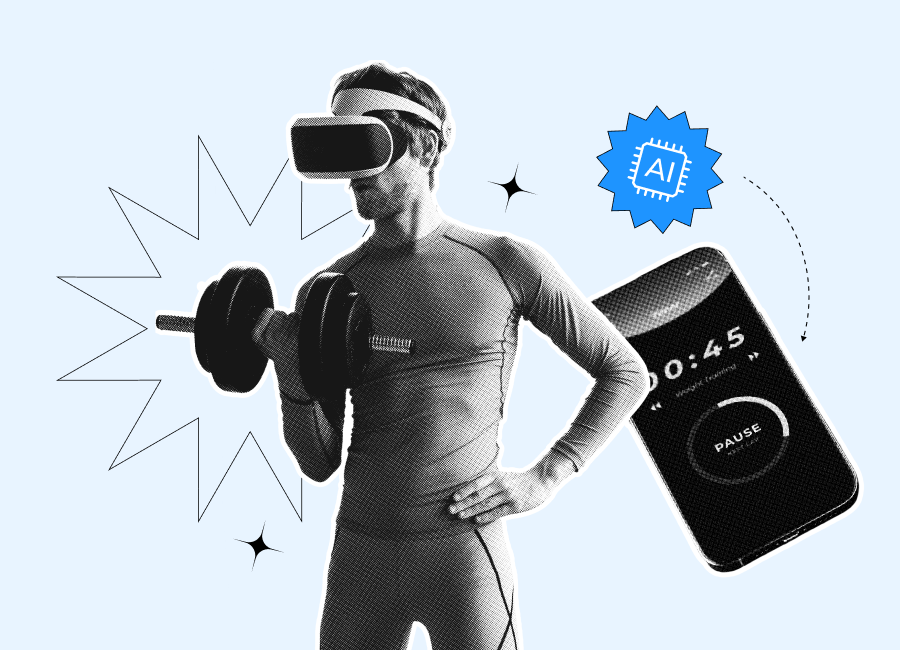No matter what kind of software products you plan to build, it’s vital to do so in accordance with leading trends in the current market. When it comes to creating software solutions for the learning industry, it’s important to make sure your application provides not only comprehensive study materials but also engaging user experiences that will ensure full student involvement in the process. One development trend definitely worth your attention is gamification in eLearning.
In this article, we’ll enumerate some popular gamification examples and explain the benefits of gamification for different groups of users, including school and university students as well as employees engaged in corporate learning or a professional training course.
What is gamification in eLearning?
Before considering ways to use gamification in your online learning apps, let’s clarify what it can be and what it can offer. Generally speaking, gamification refers to the concept of adding various features typical of a game to non-gaming environments.
In other words, gamification in eLearning includes enriching various apps for schools and corporate learning with elements traditional in digital gaming, such as in-app rewards, rankings, and leaderboards.
Why are developers of eLearning solutions adding such features to their applications? The answer is amazingly simple: Because people like games, they like competing with other users, and the spirit of competition can motivate learners to study harder. Let’s consider the benefits of gamification in this type of software in more detail.
Benefits of gamification in corporate learning
One opinion holds that you should use gamification elements only in solutions targeted at school learners. But that’s far from the reality; the age of users means nothing. Even when building a solution for corporate training, it’s worth thinking about designing some features that will resemble a game. The advantages of such an approach offer excellent proof of this idea.

- Gamification helps make the learning process more immersive and engaging. When people are just being asked to memorize some points, they’re likely to get bored. When they get rewards and bonuses for correct answers, that’s a different story.
- With gamified learning, you can diversify the formats of the provided materials and opt for different game mechanics. The more different formats and types of tasks are employed, the higher learners’ interest will be.
- Thanks to elearning gamification elements, you can help your staff reduce the time that is typically required for memorizing new knowledge. People do not like spending long hours studying but when the format is interesting to them, learning objectives can be achieved faster.
- Interactivity boosts effectiveness. When users have the opportunity to interact with the app, an obligatory part of any gamification element, it boosts the chance that the learners will gain some valuable takeaways.
- When people can track their progress and compare their results with the performance demonstrated by their co-workers, they are more motivated. And this rule works in relation to absolutely all types of learning processes.
- Result-oriented and efficient training programs always have a positive impact on an employer’s reputation. While businesses are focused on boosting customer loyalty, it’s crucial not to forget about employee loyalty. Boring and monotonous corporate training can only annoy your staff but engaging learning experience will help you to get opposite outcomes.
How does gamification in eLearning work?
When we are talking about elearning gamification, you should understand that it is not a strict concept which means that there can be different approaches to implementing it for your solutions. We have a couple of ideas for you that can be applied in different cases regardless of the exact type of course that you are going to offer.
- Simulations. Thanks to AR and VR technologies, you can create different situations for your employees in a virtual space. As a result, they will learn how to act in various circumstances (even in the most dangerous ones) without any risks to their safety. By getting new experiences and developing useful skills with the help of AR and VR-powered games, employees will be able to avoid injuries in the future.
- Task-based games. By applying a task-oriented approach, you can help your staff get familiarized with specific processes. Users will receive particular tasks and tools that are required to fulfill them. If players successfully complete the tasks, they win. If not, they will need to start from the very beginning.
- Assessments. Gamification principles can be also used for conducting assessments without adding any stress and pressure to your team. You can offer various quizzes that will help you to find out whether there are any gaps in the knowledge of employees.
Want to make the learning process inspiring and engaging?
Let’s enrich your eLearning app with advanced gamification features that will boost user motivation and satisfaction. We can help you!
Examples of gamification in eLearning
In deciding whether to add such features to your solution, you might want to have a look at some of the most popular elearning gamification examples. We’re not going to try to cover all possible use cases, but the list below suggests some of the most popular ones, which might inspire you to create your own absolutely unique features to wow your target audience.

Achievement badges
This is one of the most widely used gamification examples, found in a vast range of learning apps for students and employees. Badges can be offered for completing various challenges, for example, passing tests or answering extra questions, or going through certain levels.
Scores and rewards
Learners can get points for their accomplishments. To make the process even more engaging, you can allow users to unlock bonus lessons or get real-life prizes in exchange for some of their virtual coins/points.
Leader boards
This elearning gamification element can be very motivating for users to see their position in common rankings. You can create automatically updated leaderboards to help users compare their results with the performance demonstrated by others
Micro games and quizzes
These features can help you diversify the offered content. By playing games within the app, learners will often absorb information more quickly and be able to monitor for themselves how quickly they’ve mastered new material.
VR/AR
You can use the capacities of virtual and augmented reality to teach users how to operate various equipment (this functionality is of special value for corporate training) or to demonstrate what different objects or territories looked like in the past (such features can be built for platforms intended for school children). VR/AR is revolutionizing learner experiences and changing our understanding of traditional learning processes.
How gamification in eLearning can be used in corporate training
If you have an idea for creating a training program and want to make sure it will offer the desired level of learning efficacy and engagement, it’s vital to choose the right game mechanics and integrate gamification elements in the correct way.
We’ve prepared some practical tips that will help you be confident you’re on the right track with your ideas for gamified learning.
- Create a concept. You should clearly understand what gamification elements you want to add, how they will be interconnected, and how users can interact with them. Our key recommendation is to keep it simple. Don’t try to add everything that comes to mind. Make sure that all employees who will take part in the training program will fully understand all learning objectives.
- Think about rewards. Rewards are a cool motivator. Will you offer only in-game or also real-life bonuses? Will these rewards be offered only for special quizzes and competitions, or just for studying materials?
- Add social media integrations. It’s a good idea to allow users to share their results via social media accounts, for example on LinkedIn or Facebook. As we are talking about corporate training, it will be a good idea to allow your employees to make posts with their achievements on LinkedIn.
- Allow instructors and managers to share their feedback. Getting scores for accomplishments is always pleasant, but it will be especially motivating to receive feedback from a real person.
- Listen to your users’ opinions. Even if you’re sure you’ve launched a perfect software product, learners’ opinions will always be valuable as you work toward improvements.That’s why you can offer various surveys or conduct interviews to find out what employees think about their learning experience.
What are some successful gamification real-life use cases in business?
If you want to implement elearning gamification elements in your corporate training, it will be very useful to have a look at the experience of other companies to get inspiration and fresh ideas.
- VR training by Walmart. The company first announced its intentions to provide VR-powered learning experience to its associates in September 2018 and since then its program has been greatly expanded and updated in accordance with modern needs. VR headsets are used for simulating different situations and teaching employees how to operate various equipment.
- Nintendo-powered training by McDonald’s. Almost 4,000 McDonald’s stores in Japan were equipped with Nintendo game console units to help new employees develop such skills as cooking fries, making burgers, and cleaning workstations. As a result, with Nintendo game mechanics, it became possible to reduce the time needed for training by two times.
eLearning software development by Cogniteq
Our team has vast experience in building edtech solutions, and we’d like to share with you one example of our successfully developed solutions. It is a web mathematics app for 5- to 13-year-old kids. Our client contacted us with a request to create a solution that could be used as an online mathematics tutor. The key goal of this app was to ensure a highly personalized approach for each user and, as a result, increase its effectiveness.

Each user has an individual dashboard and a customized character that functions as an avatar. Users can choose hairstyles, clothes, and general appearance for these characters.
All lessons and learning content in the app are published in separate topics and categories, and it is possible to hold competitions between learners within each category.
For their accomplishments, children earn credits that can be used for “buying” various items for customizing their avatars and dashboards.
Children can also compare their scores with the results of other users and receive new statuses for their accounts — Pro, Master, or Superstar — which indicate their progress.
According to the surveys conducted by our client after the app release, the project turned out to be a very successful one. Children who regularly use this app surpass their peers in mathematics knowledge by more than 1.5 years.
Final word
When it comes to building eLearning solutions, a lot of companies concentrate only on the quality of educational materials. And we do not want to underestimate the importance of this component. Nevertheless, user experience shouldn’t be ignored. If you want learners to achieve the highest results possible, you need to make their experience full of fun and motivation. And that’s exactly what gamification can help you to achieve.
At Cogniteq, we have an excellent understanding of all the benefits of gamification and of all the ways to make the learning process interesting and engaging for users of any age. Contact us and book a consultation with our experts!
FAQ
What does gamification add to eLearning?
Gamification can help learners change their approach to absorbing new information and developing practical skills. New formats of learning content and new types of tasks, in combination with challenges, fun and various competitions with peers, increase motivation and engagement as well as ensure higher productivity and better results.
How to use gamification in eLearning
Various elearning gamification features can help you make sure all users stay engaged throughout the learning process. Some of the most popular examples of gamification use cases are in-app rewards, competitions, leader boards, achievement badges, and more.










































